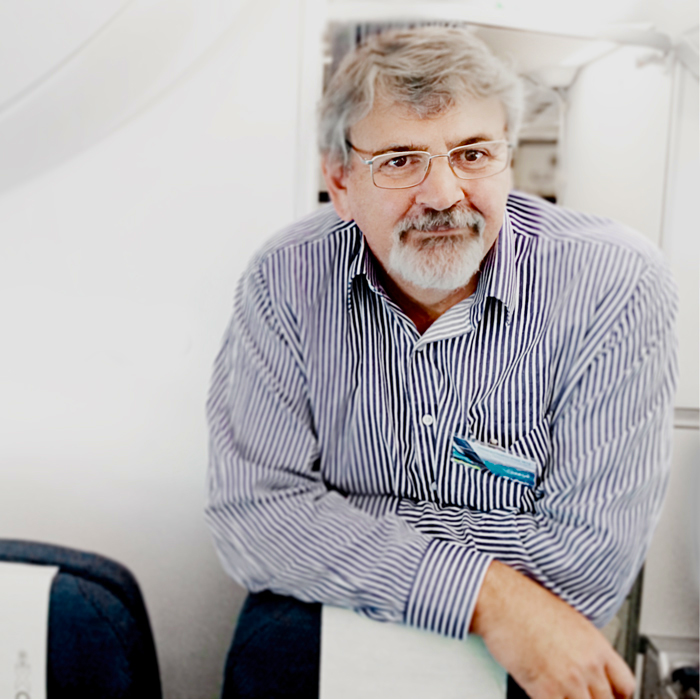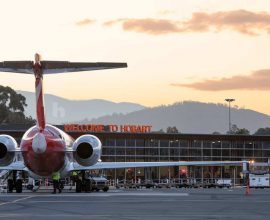Perth Airport lights the way for WA tourism
Perth Airport expects a new Category IIIB instrument landing system to become operational in 2018 will make it easier to attract international flights and boost Western Australia’s tourism potential.
The upgrade to CATIII infrastructure, due to be approved by the end of June, has been five years in the making.
It included a massive $36 million lighting upgrade that saw almost 3800 lights, 650km of cabling and 150km of electrical conduit installed.
The end result will improve runway visibility during adverse weather such as fog and help make costly weather-related diversions to Adelaide a rare event.
It will also improve airline operating costs by relieving carriers of the burden of carrying extra fuel in case of diversions, according to Perth Airport chief executive officer Kevin Brown.
“This $36 million investment is a generational change for Perth and Western Australia,’’ Brown says.
“The upgrade will improve Perth Airport’s operational effectiveness, delivering efficiency gains for airlines and providing greater certainty to passengers and businesses.
“It makes Perth as a destination more attractive for international airlines as it essentially provides a guaranteed landing for aircraft. This is critical to support long-haul flights such as the Qantas direct flight to London.’’
The undertaking with partners Aurecon, West Coast Civil, ADB Safegate and Airservices Australia has seen the lighting system at the airport radically transformed.
It included important safety enhancements such as new stop bar lights installed at all runway entries, the addition of runway centreline and touch down zone lights, and an upgraded high intensity approach lighting system to the airport’s main 3444m runway, 03/21.
An interface with Airservices Australia’s Integrated Tower Automation Suite (INTAS), commissioned in Perth last October, allows air traffic controllers to operate the system.
The big project also meant renewing aged cables around all taxiways and runways, building three new airfield lighting equipment rooms and digging new conduit systems around 03/21 and the shorter runway, 06/24.
The project was a big challenge for the airport, which needed to remain operational over the two-year construction period.
This involved breaking the work into manageable proportions.
“We basically took the airfield manoeuvring area and chopped it up into what we believed to be appropriate segments,’’ chief corporate services officer Debra Blaskett says.
“It ended up being about 90 segments and that was what we based our method of works planning around.
“It doesn’t mean there were 90 stages, we went into some of them two or three times.’’
While terminal work at the airport was bigger in scope, Blaskett says the lighting project had a bigger impact from an operational standpoint.
The airport held regular planning meetings with various teams to work out what the impact on routines and capacity would be during various works.
Access to the main runway was planned up to nine months ahead, with briefings and aeronautical information packages provided to industry well ahead of time.
The successful completion of the works means the lights are in place and operational, with the taxiway lights already in use.
The airport is now waiting for Civil Aviation Safety Authority approval to turn on the touchdown, centreline zone and the high intensity approach lighting.
“We’re kind of hoping we’ll get that before Christmas so we can turn the lights on before Christmas. But the worst case is January,’’ Blaskett says.
Running parallel to this is the upgrade of the Instrument Landing System for Runway 21, which as of December, became classified for CAT II operations.
CASA requires a 12-month proving period to reclassify the ILS as CAT IIIB and that began in May last year.
When it does come together, the new infrastructure will make a significant difference for both arriving and departing aircraft.
Prior to August last year, Perth was limited by an 800m runway visual range (RVR) limit, effectively the distance ahead at which a pilot of an arriving aircraft must be able to distinguish the runway lights, and departures at 550m visibility.
The introduction that month of transmissometers, devices that can help determine visual range, allowed the RVR to be reduced to 550m.
CASA’s consent to turn on the full lighting system will see Perth move from CAT I to CAT II, reducing the arrival RVR to 300m and minimum visibility for departures to 125m for suitably-equipped aircraft.
The decision height, the minimum height at which pilots of arriving aircraft need to decide on whether to land, will drop from 200ft (60m) to 100ft (30m).
The final upgrade to a CAT IIIB aerodrome is expected in June after CASA approves Airservices’ instrument landing system for the main runway. The ILS is undergoing a 12-month testing regime due to end in May.
This will see the decision height drop to 15m if under manual control or nil if the aircraft is capable of making automatic landings. The RVR will also be reduced to 75m.
To what extent an airline will be able to take advantage of the new category will still depend on the carrier’s approvals, aircraft and crew capabilities.
However, the reduction in the take-off RVR is expected to benefit even those aircraft that are not CAT III equipped.
By Steve Creedy
About Steve Creedy
 An award-winning journalist, Steve began covering aviation in the United States in the early nineties before returning to Australia later that decade and editing The Australian’s aviation section for 17 years. He is editor of Airline Ratings and has co-authored books on industry initiatives aimed at reducing greenhouse emissions.
An award-winning journalist, Steve began covering aviation in the United States in the early nineties before returning to Australia later that decade and editing The Australian’s aviation section for 17 years. He is editor of Airline Ratings and has co-authored books on industry initiatives aimed at reducing greenhouse emissions.
Steve has joined the AAA to write interesting and informative editorial on the aviation industry.





